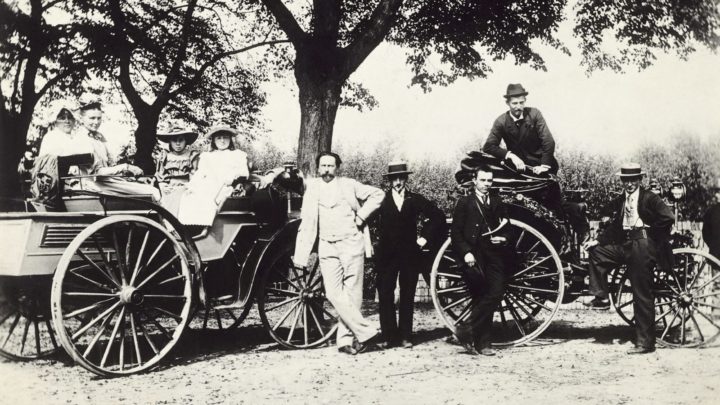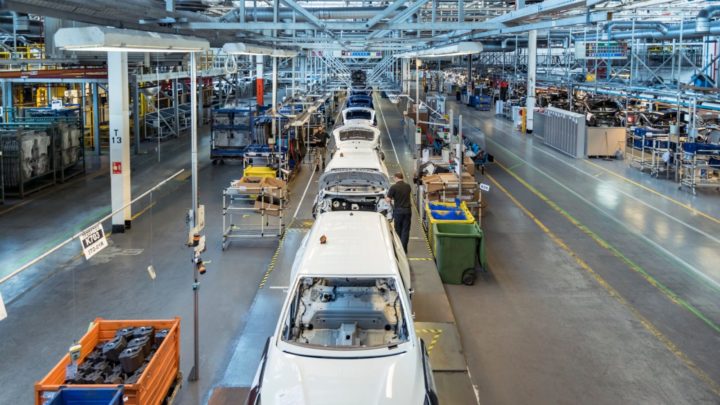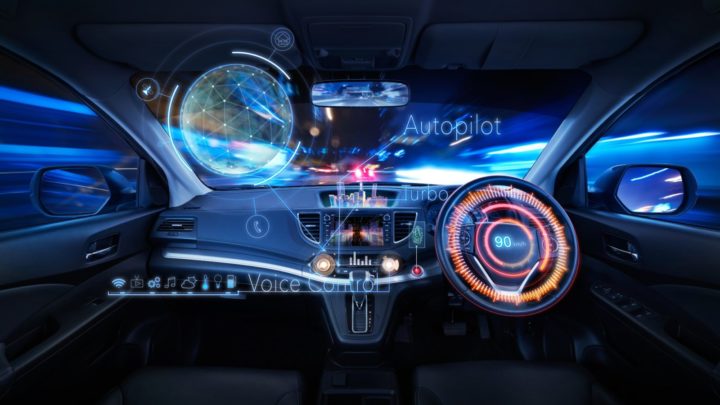
When the first Mercedes-Benz came onto the scene in the late-1800s it looked much more like a bike than a car. How motor cars have evolved since then!
Those early machines owed an enormous amount in their design to the horse and carriage they were starting to replace. They had large wheels, coach suspension and even bodywork more akin to a coach than anything else (apart of course, from that early Mercedes, which had a very ‘stripped-down’ appearance).

Since then, the development of motor cars has been continuous. Its body design has changed shape to accommodate larger and more varied engines and instruments (and also to follow the tastes of an increasingly-interested public). For example, early engines quickly grew in size and power, and fuel could be purchased at specifically-built outlets instead of at the local chemist, which is where it had been at first.
Naturally the automobile — much like later developments such as radios, television, motor cycles, electrical equipment, 35mm cameras and plastic materials — was adopted eagerly by anyone with a few extra dollars or pounds to spare and is wasn’t long before there were thousands of them chugging about our roads. That was when both the big money and the world of design took over the situation.
First it was the introduction of the production line, invented by a genius named Henry Ford, which meant that cars could be built in minutes, instead of days, which both increased his profit and the popularity of the car. Then the designers really stepped in, thinking up all sorts of things that the car simply could not do without(in their opinion), such as semaphore turning signal or the electrical windscreen wiper to remove rain spots in inclement weather and movable seats, so that each person taking over to drive could adjust their position for maximum comfort and visibility.

At first progress was fairly slow. It was after World War II, once car manufacturers got back to building cars instead of tanks, that real progress started to be made.
The car designers discovered something the aircraft builders already knew — aerodynamics! If the car’s body was made in a particular shape it travelled much faster and at the same time was much more economical in the use of fuel. This led to one small undesirable effect — most makes of car started to look very much like their competitors; aerodynamics demanded it, so the designers had to dream up other ways of attracting customers to their brand. Some used extravagant tail structures, great fins sticking up like some space rocket, while others attracted attention with massed chromium parts, bumpers, mud guards, window strips, hinges, door handles and mirrors got the chrome treatment; you could barely look at a car in those days, if the sun was shining!
Then of course, the electronic age arrived and the car manufacturers were all compelled to install CD players into our cars, plus radios, satellite navigation, heated seats, electrically adjusted mirrors, power steering, anti-skid devices, airbags, turbos, fuel injection, cruise control and all manner of other devices. Designers had the bit between their teeth by now, and they started going ‘off the planet’ with their suggestions, so that we are now looking forward to (with some trepidation I believe), driverless cars, electric cars and cars that run on hydrogen!

I guess it won’t be long before we have to absorb such notions as cars that fly, instead of running on roads, or perhaps, in the extreme future we might be able to ‘beam’ ourselves to where we want to go, with no vehicle at all, just like those folk on Star Trek had us imagining! It all makes for a rather frightening future, doesn’t it?